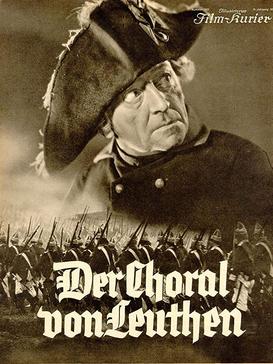
The Hymn of Leuthen is a 1933 German film depicting Frederick the Great, directed by Carl Froelich starring Otto Gebühr, Olga Chekhova and Elga Brink. It was part of the cycle of nostalgic Prussian films popular during the Weimar and Nazi eras. The title refers to the 1757 Battle of Leuthen.
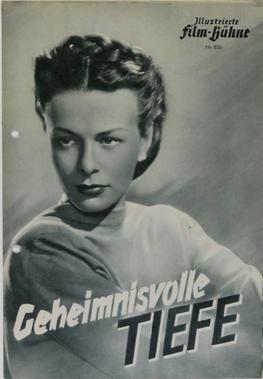
Mysterious Shadows is a 1949 Austrian drama film directed by G. W. Pabst and starring Paul Hubschmid, Ilse Werner, and Elfe Gerhart. It was shown at the Venice Film Festival. It was shot at the Rosenhügel Studios in Vienna and at the Hoher Dachstein ice caves. The film's sets were designed by the art director Isabella Schlichting and Werner Schlichting

Elisabeth Margarete Biermann, known professionally as Elga Brink, was a German film actress. Brink rose to prominence in the early 1920s, when she starred in many silent films. Her last silent film was Marriage in Trouble in 1928. After silent films, Brink continued acting in sound films until her retirement in 1951. Her last role was in the 1951 movie Das fremde Leben. After her retirement, Brink remarried and worked as a clerk in Hamburg until her death in 1985.

Anton Pointner was an Austrian stage and film actor. Pointner's career began on the stages of Austria and he performed in both silent and sound films in his native Austria, as well as in Germany and the United States.
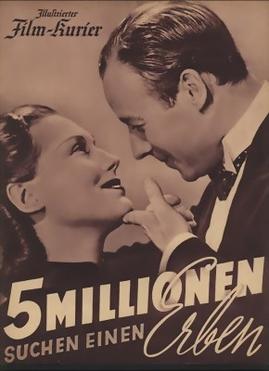
Five Million Look for an Heir is a 1938 German comedy film directed by Carl Boese and starring Heinz Rühmann, Leny Marenbach and Oskar Sima. It was based on a novel by Harald Baumgarten. It was shot at the Halensee and Tempelhof Studios in Berlin. The film's sets were designed by the art directors Alfred Bütow and Willi Herrmann.

The Violet of Potsdamer Platz is a 1936 German drama film directed by Johann Alexander Hübler-Kahla and starring Rotraut Richter, Margarete Kupfer and Else Elster. It was shot at the Marienfelde Studios in Berlin. The film's sets were designed by the art directors Gustav A. Knauer and Alexander Mügge.
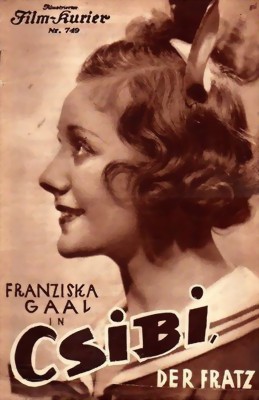
A Precocious Girl is a 1934 Austrian comedy film directed by Max Neufeld and Richard Eichberg and starring Franciska Gaal, Leopoldine Konstantin and Herbert Hübner. The film's sets were designed by art director Julius von Borsody.

Marshal Forwards is a 1932 German historical war film directed by Heinz Paul and starring Paul Wegener, Traute Carlsen and Hans Graf von Schwerin.
A Dangerous Game is a 1924 German silent adventure film directed by Harry Piel and starring Piel, Hermann Leffler and Claire Rommer. It is the sequel to The Fake Emir.
Old Mamsell's Secret is a 1925 German silent film directed by Paul Merzbach and starring Frida Richard, Guido Parish and Marcella Albani.
Circus Romanelli is a 1926 German silent comedy film directed by Georg Jacoby and starring Reinhold Schünzel, Claire Rommer and Victor Janson.

The Merry Widower is a 1929 German comedy film directed by Robert Land and starring Harry Liedtke, La Jana, Alice Roberts. The film's sets were designed by Robert Neppach.
Night of Mystery is a 1927 German silent thriller film directed by Harry Piel and starring Harry Piel, Dary Holm, and Josef Peterhans. It was shot at the Staaken Studios in Berlin. The film's sets were designed by the art director Willi Herrmann.

Grandstand for General Staff is a 1932 German comedy film directed by Eugen Thiele and starring Iván Petrovich, Elga Brink, and Betty Bird.

Crime Reporter Holm is a 1932 German mystery film directed by Erich Engels and starring Hermann Speelmans, Elga Brink and Julius Falkenstein. It was shot at the Johannisthal Studios in Berlin. The film's sets were designed by the art directors Willi Herrmann and Herbert Lippschitz. Location shooting took place around Garmisch-Partenkirchen in Bavaria.
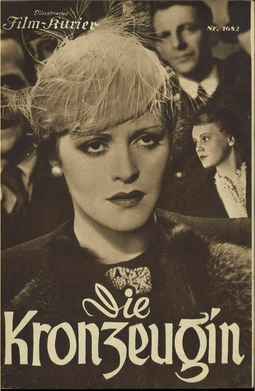
The Chief Witness is a 1937 German crime drama film directed by Georg Jacoby and starring Iván Petrovich, Sybille Schmitz and Sabine Peters. It was shot at the Babelsberg Studios in Berlin. The film's sets were designed by the art directors Otto Hunte and Willy Schiller. Location shooting took place in the Krkonose Mountains in Czechoslovakia and Zugspitze in Bavaria.

Men, Animals and Sensations is a 1938 German drama film directed by and starring Harry Piel and also featuring Ruth Eweler and Elisabeth Wendt. It is a circus film. It was shot at the Terra Studios in Berlin with sets designed by the art director Max Knaake. Location filming took place at the Sarrasani circus in Dresden.

Ninety Minute Stopover is a 1936 German adventure crime film directed by and starring Harry Piel. It also features Alexander Golling, Else von Möllendorff and Genia Nikolaieva. It was shot at the Grunewald Studios of Tobis Film in Berlin and On location in Lisbon. The film's sets were designed by the art directors Wilhelm Depenau and Karl Vollbrecht.

Stjenka Rasin is a 1936 German historical drama film directed by Alexandre Volkoff and starring Wera Engels, Hans Adalbert Schlettow and Heinrich George. It was shot at the Babelsberg Studios in Berlin. The film's sets were designed by the art directors Gustav A. Knauer and Alexander Mügge. It is also known by the alternative title Wolga, Wolga.

Regimental Music is a 1950 German drama film directed by Arthur Maria Rabenalt and starring Heidemarie Hatheyer, Friedrich Domin and Siegfried Breuer. It was an Überläufer, a film made predominantly during the Second World War but not released until after the fall of the Nazi regime. It was based on the novel Die Schuld der Gabriele Rottweil by Hans Gustl Kernmayr and it sometimes known by this title. It was shot at the Bavaria Studios in Munich. The film's sets were designed by the art directors Rudolf Pfenninger and Ludwig Reiber. The film's direction was originally assigned to Georg Wilhelm Pabst before he was replaced by Rabenalt.
















